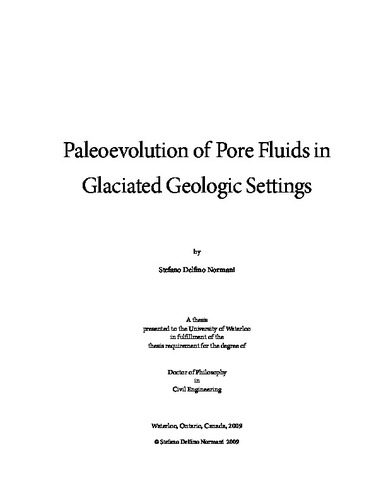| dc.description.abstract | Nuclear power generation is being regarded as a solution to ever increasing demand for electricity, and concerns over global warming and climate change due to the use of fossil fuels. Although nuclear power generation is considered to be reliable, economical, clean, and safe, the wastes produced from the nuclear fuel cycle are not, and can remain hazardous for hundreds of thousands of years. An international consensus has developed over the past several decades that deep geologic disposal of low, intermediate, and high level radioactive wastes is the best option to protect the biosphere.
In this thesis, both regional scale and sub-regional scale models are created to simulate groundwater flow and transport for a representative Canadian Shield setting, honouring site-specific topography and surface water features. Sub-surface characteristics and properties are derived from numerous geoscience studies. In addition, a regional scale model is developed, centred on the Bruce Nuclear Power Development (BNPD) site near Tiverton, Ontario, and located within the Michigan Basin. Ontario Power Generation (OPG) has proposed a Deep Geologic Repository (DGR) for low & intermediate level waste (L&ILW) at the BNPD site.
Paleoclimate simulations using various combinations of parameters are performed for both the Canadian Shield Sub-Regional model, and the Michigan Basin Regional model. Fracture zone permeability is a very important parameter when modelling crystalline rock settings. Migration of a unit tracer representing glacial recharge water can occur to depth in fractures of high permeability. Representative rock compressibility values are necessary as compressibilities are used to calculate storage coefficients, and the one-dimensional loading efficiency; these affect the subsurface propagation of elevated pore pressures due to glacial loading at surface. Coupled density-dependent flow and transport in paleoclimate simulations affects deep flow systems and provides a measure of flow stability, as well as increasing the mean life expectancy at depth. Finally, hydromechanical coupling is a very important mechanism for reducing vertical hydraulic gradients during a glaciation event when a hydraulic boundary condition equal to the pressure at the base of an ice-sheet is applied at ground surface. Pore water velocities are reduced, thereby retarding migration of surface waters into the subsurface environment. | en |

